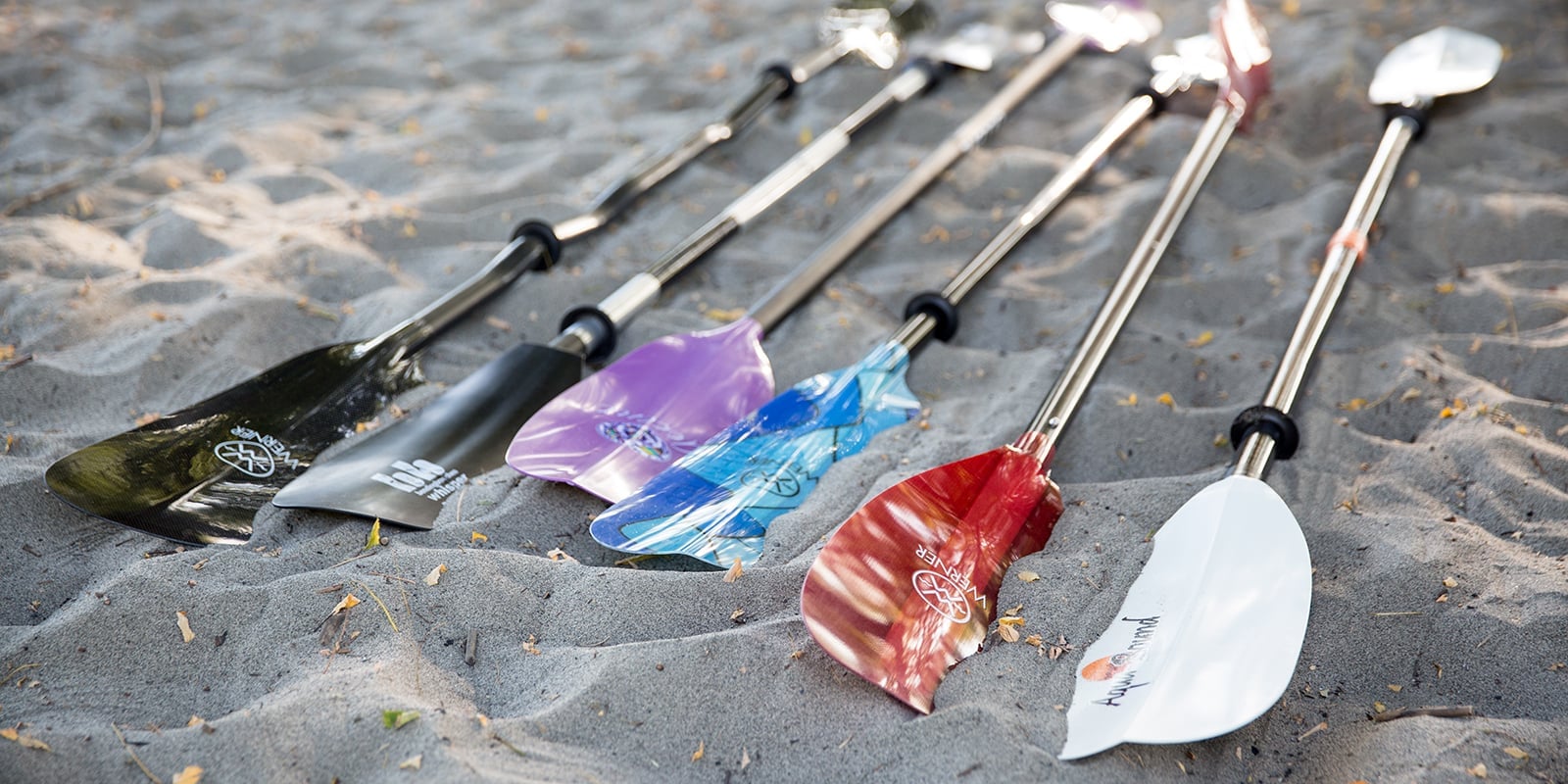Next to the kayak itself, your paddle has the biggest impact on your performance on the water. Even a short tour involves thousands of strokes, so a proper paddle can make all the difference. To choose a kayak paddle, you need to consider four basic ideas:
- Length: Your boat width and your height determine your paddle length.
- Materials and price: Lightweight materials improve performance, but add to a paddle's price.
- Blade choice: Your paddle's blade size and shape affect its overall efficiency in the water.
- Shaft choice: A bent shaft or feathered blades can also improve a paddle's effectiveness.
Paddle Length
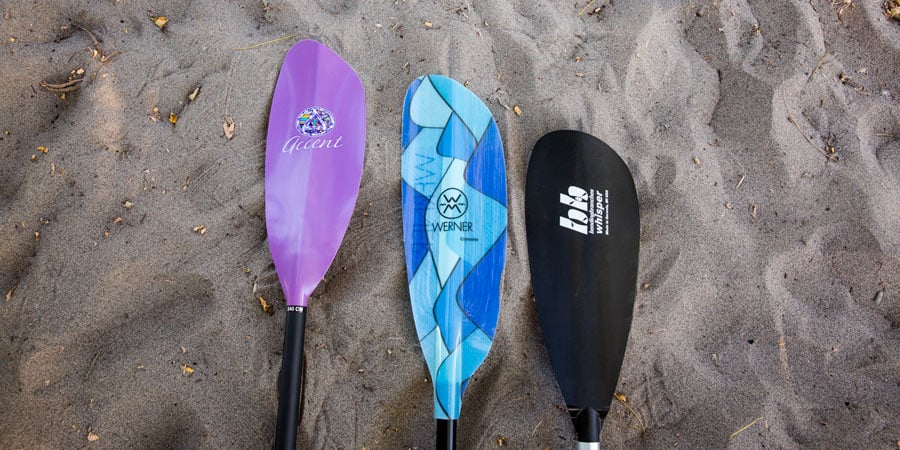
Figuring out the right size (length) of paddle is surprisingly straightforward. The wider your boat is, the longer your paddle needs to be. Your height is also a factor, especially for a narrower boat: Taller paddlers need longer paddles.
So, paddle makers size according to those two factors (the paddles are sized in centimeters even though the boats are measured in inches). The chart below is for Werner Paddles. It's a good idea to check the website of any brand you're considering because you might find slight variations from the specs below:
Paddler Height | Boat Width | |||
| Under 23" | 23" to 28" | 28" to 32" | Over 32" |
Under 5' tall | 210cm | 220cm | 230cm | 240cm |
5' to 5'6" tall | 215cm | 220cm | 230cm | 240cm |
5'6" to 6' tall | 220cm | 220cm | 230cm | 250cm |
Over 6' tall | 220cm | 230cm | 240cm | 250cm |
Tweener Sizes
If you fall between two sizes, it's generally better to go shorter. Either size would probably work, but you'll save a few ounces with a shorter paddle. If you're proportioned with a shorter torso, though, then the added reach will come in handy and you should go with the longer paddle.
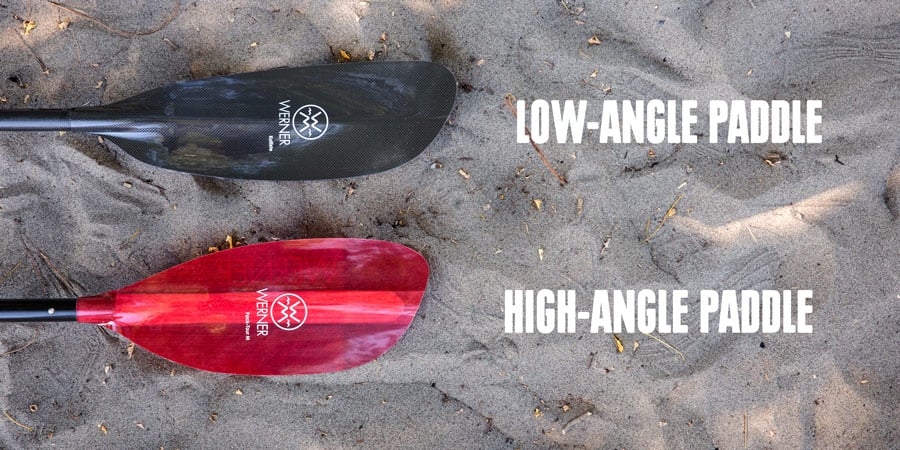
Low- and High-Angle Paddles
The low-angle stroke is done with the shaft being only slightly tilted—your top hand stays below your shoulder level. This stroke is ideal for relaxed, recreational kayaking in flat water.
Featuring a more tilted shaft and close-to-boat blade path, the high-angle stroke is one some paddlers progress to for more speed. The stroke requires precision and is fatiguing if you lack that precision. It requires a shorter paddle and a wider blade than a paddle you'd use for a low-angle stroke.
Paddles are designated as being for either low- or high-angle kayaking, and size charts for each are different. The chart above is for low-angle paddling.
Materials
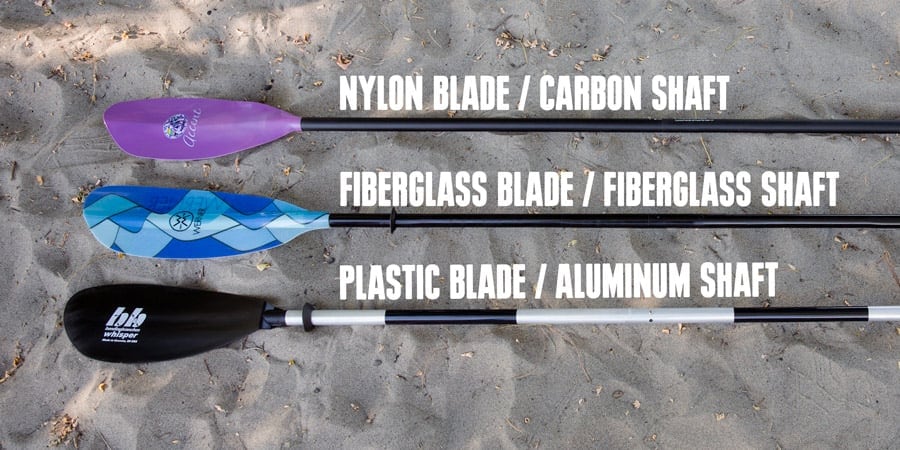
Blade Materials
The truism that saving weight raises both performance and price holds here, too. Because you raise your blade higher than your shaft, lightweight materials there pay off in greater fatigue reduction. Different blade materials also differ in how well they transfer energy to your stroke.
"Plastic" is a generic term here. In specs you'll see variations like "polymer" or "polypropylene," or plastic blends infused with nylon or fiberglass. Each might produce a modest gain in performance (and price). And "composite" is a catchall term for carbon-fiber and fiberglass.
Plastic/Nylon Blades
The low-price leader, plastic is often chosen by recreational paddlers who think it's indestructible. It can crack, though, and degrades when left in the sun. Plastic's flexibility might prevent it from snapping in two, but flexibility in the water sacrifices efficiency on your stroke.
Fiberglass Blades
In the middle of the price range, these offer excellent performance and durability. More lightweight than plastic, a fiberglass blade might chip, but it usually won't crack all the way through. Rigid fiberglass blades are efficient in the water.
Carbon-Fiber Blades
If you're willing to pay top dollar for top performance, go with carbon-fiber. Truly ultralight, it's also ultrastiff for excellent energy transfer with each stroke.
Shaft Materials
Plastic shafts are rare. Aluminum, the most wallet-friendly shaft material, is durable and serviceable. It can also get really cold or hot, so you might want to glove-up before you grab it in cold weather, and you should stow it in the shade when it's hot out.
Carbon and fiberglass shafts are durable, strong and lightweight. Pairing one of those shaft materials with either of those lightweight composite blade materials creates your most lightweight and efficient paddle option—and the price will reflect that level of performance.
Blade Design
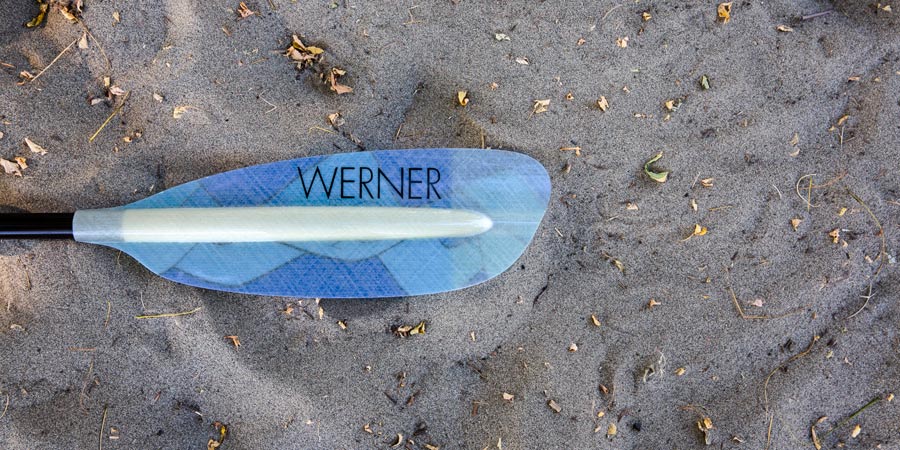
Most paddle blades these days feature an asymmetrical dihedral shape.
An asymmetrical blade is relatively narrow and shorter on one side. That angles it so the surface area of the blade is more uniform when it's pushing though the water.
You can spot a dihedral blade by the rib down its center. This allows water to flow smoothly and evenly over both halves of the blade. Blades without this flutter more, which can make it more difficult to track straight.
Because they're lighter, narrower blades are comfortable for long stretches of paddling; that's especially helpful on a full-day tour or a multiday trip.
Wider blades lend themselves to quick powerful strokes that let you accelerate quickly. Kayaking surfers often prefer them for this reason. Some specialized fishing blades also include a J-shaped notch in the blade to retrieve snared fishing lines and hooks.
Shaft Design
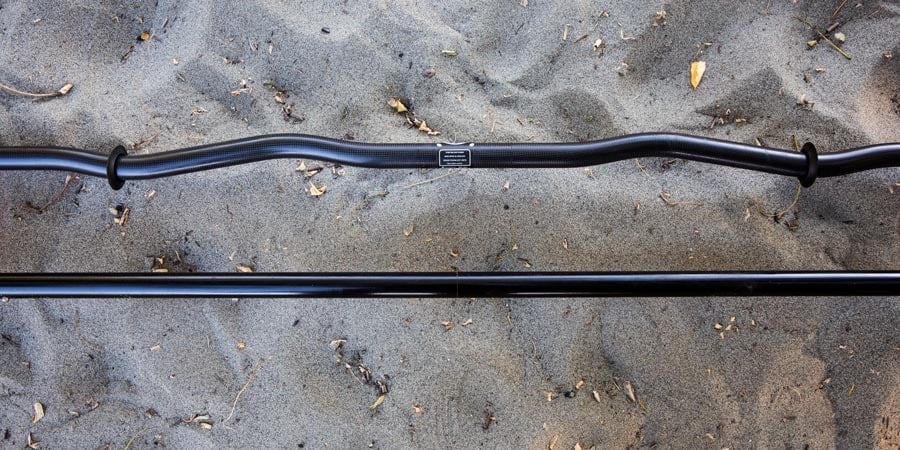
Straight shaft or bent shaft? Bent-shaft paddles have a "kinked" section that positions hands at a more comfortable angle during the power portion of a stroke, which minimizes discomfort and fatigue in your joints. If you're changing from a straight-shaft paddle to a bent-shaft paddle, plan on a day on the water to adjust your stroke technique.
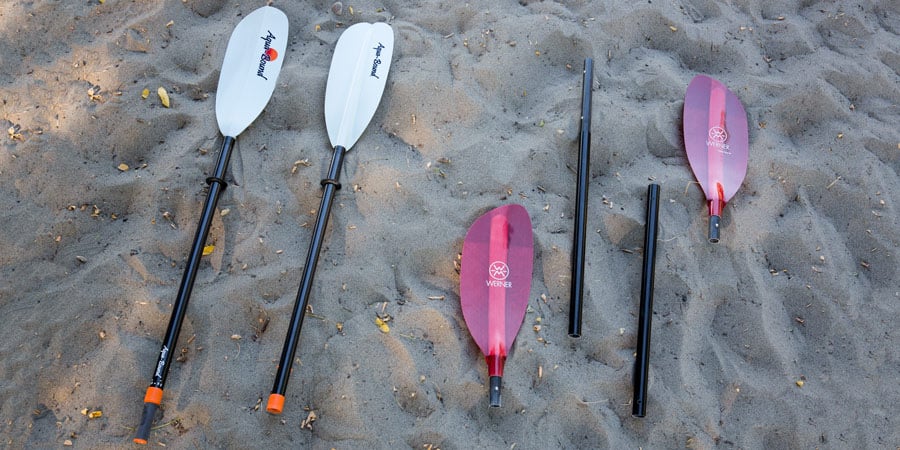
Two-piece or four-piece? Both are designed to break down for easier storage. A model with a four-piece shaft simply has shorter sections, so it's good if you're hiking somewhere with a portable kayak or taking your paddle on a plane.
Small-diameter shafts offer a less fatiguing grip for paddlers with small hands. If you can't touch your thumb and index finger together when you grab a paddle, this is you. Shafts aren't made in multiple diameters: They're either standard or small diameter.
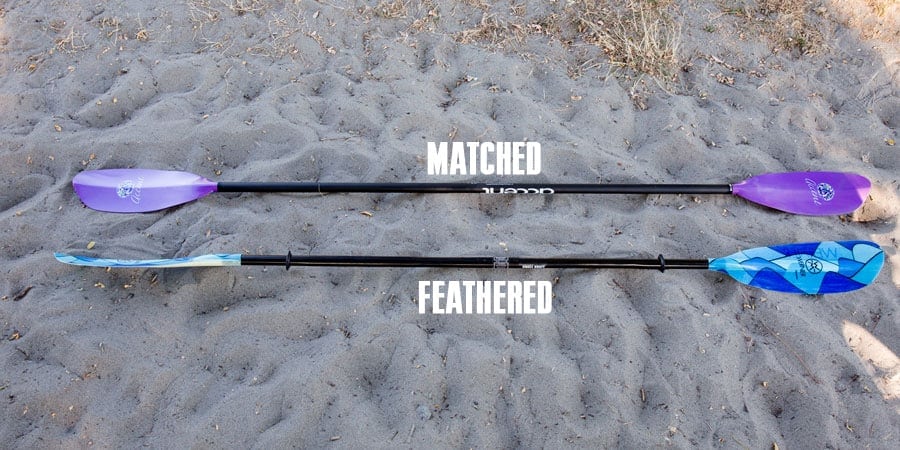
Feathering
Blades are either feathered or matched. Matched, or unfeathered, blades are aligned with each other. Feathered blades are not on the same plane; they are offset at an angle to each other, which reduces wind resistance on the blade that's out of the water.
Almost all paddle shafts allow you to rotate them to be matched or feathered. They also allow you to easily adjust the amount of feathering, typically in 15-degree increments. A few let you adjust them to any angle you want.
Note: The terms "right-hand control" and "left-hand control" refer to which hand rotates the shaft during a feathered stroke. Most paddles let you set it up either way.
